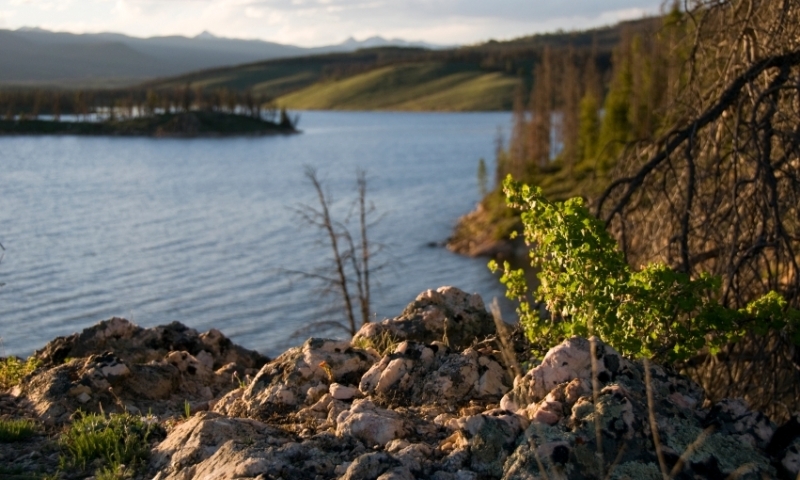- Lake Granby offers the visitor easy access to Rocky Mountain National Park and plenty of fun water sports
- The lake is accessible throughout the year
- Some of the activities to enjoy on Lake Granby are windsurfing, water-skiing, boating and fishing
- Keep an eye out for wildlife nearby
Overview
Granby Lake is the largest of five lakes in the Colorado River Valley and lies adjacent to Rocky Mountain National Park, which makes it a popular destination for all those visiting this famous region and who want to enjoy some water sports. With 260 campsites and three boat launches, there’s plenty of room for everybody.
Location/Directions
Lake Granby, Colorado is west of Rocky Mountain National Park. Take Highway 40 west to US Highway 34 north to the lake.
Seasons
Lake Granby, CO is accessible year round.
Activities
You’ll find all sorts of activities for all ages at Lake Granby. Here are just a few:
- Fishing
Fishing enthusiasts come to Granby Lake to catch some Mackinaw Trout and Kokanee Salmon. Getting out there on a sailboat or motorboat gives you a great chance of finding some large fish. You can do ice fishing from late in December through the middle of February. - Water Sports
Discover the perfect place for all kinds of water recreation. Go windsurfing, water-skiing, boating and, of course, fishing. - Boating
A popular lake for boating, Lake Granby offers a number of public boat marinas and launching areas. There is motorized boating allowed, but a great place for non-motorized boating is Columbine Bay. - Wildlife Watching
Since the lake borders Rocky Mountain National Park, there is plenty of backcountry around and the wildlife doesn’t just stay in the park. You will more than likely see bighorn sheep, elk, black bears, cougars and mule deer during you visit.
Additional Info
Granby Lake, Colorado shares a certain fame along with Shadow Mountain Reservoir, Grand Lake and Willow Creek Reservoir. Canals connect them, and when water is needed for irrigation, whatever is necessary can be pumped from one lake or reservoir to the other. The whole idea is to have irrigation without power generation.


